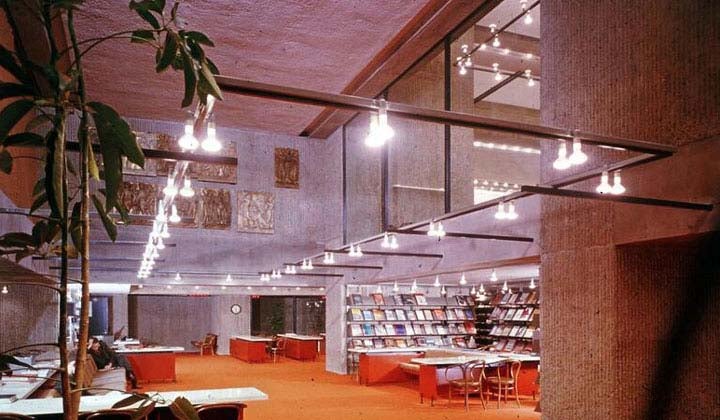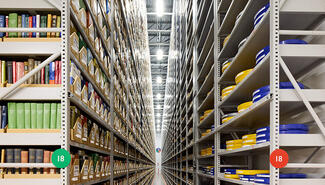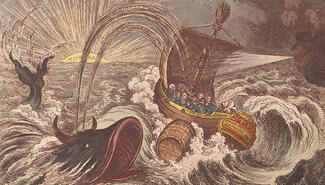Online exhibit celebrates Arts Library’s 15th anniversary
The Robert B. Haas Family Arts Library is housed in a famous building designed by renowned modernist architect Paul Rudolph. A new online exhibit, “Something about the Nature of Architecture: The History of the Robert B. Haas Family Arts Library,” marks the 60th anniversary of the building’s dedication and the library’s 15th as one of its occupants.
The Haas Arts Library shares the space on York Street, known as the Yale Arts Complex, with the School of Architecture and the Department of the History of Art. Rudolph’s original design has changed somewhat during the past 60 years, but since the library opened in 2008, it has been at the building’s center—a unique and inviting environment for the research and study of art, art history, architecture, and drama.
The online exhibit opens with a profile of Rudolph, who was a student of Walter Gropius, founder of the Bauhaus art movement of the early 20th century. Rudolph was chair of Yale’s Department of Architecture from 1957 to 1965. There are historic photographs, drawings, and models of the original structure, dedicated as the Art and Architecture Building in 1963. The building is one of the earliest known examples of Brutalist architecture in America. A section titled “Critical Response” provides contemporary press reviews of the innovative and controversial building, including a critique by Rudolph’s peer Vincent Scully, former Sterling Professor of the History of Art in Architecture at Yale.
The exhibit also includes detailed information about the library’s structural elements, lighting design, furnishings (including the Knoll “Womb” chairs), and interior details. Rudolph himself chose the bright orange “paprika” carpeting—a signature feature of the library—to make “the floor appear to rise or float” and stimulate “the eyes and emotions of the viewer.”
“Something about the Nature of Architecture” was curated by Tess Colwell, arts librarian for Research Services, and Bill Richo, library services assistant at Haas Arts Library.
“The idea for the exhibition came from a bibliography that Bill developed based on research requests for information about the building and about Rudolph,” Colwell said. “As a useful reference for researchers, the online exhibition includes a bibliography to cited sources, a list of relevant collections, and recommendations for further reading about the architect, the building, and the library.”
View the online exhibit, which is on permanent display on the Yale Library website.
—Deborah Cannarella



